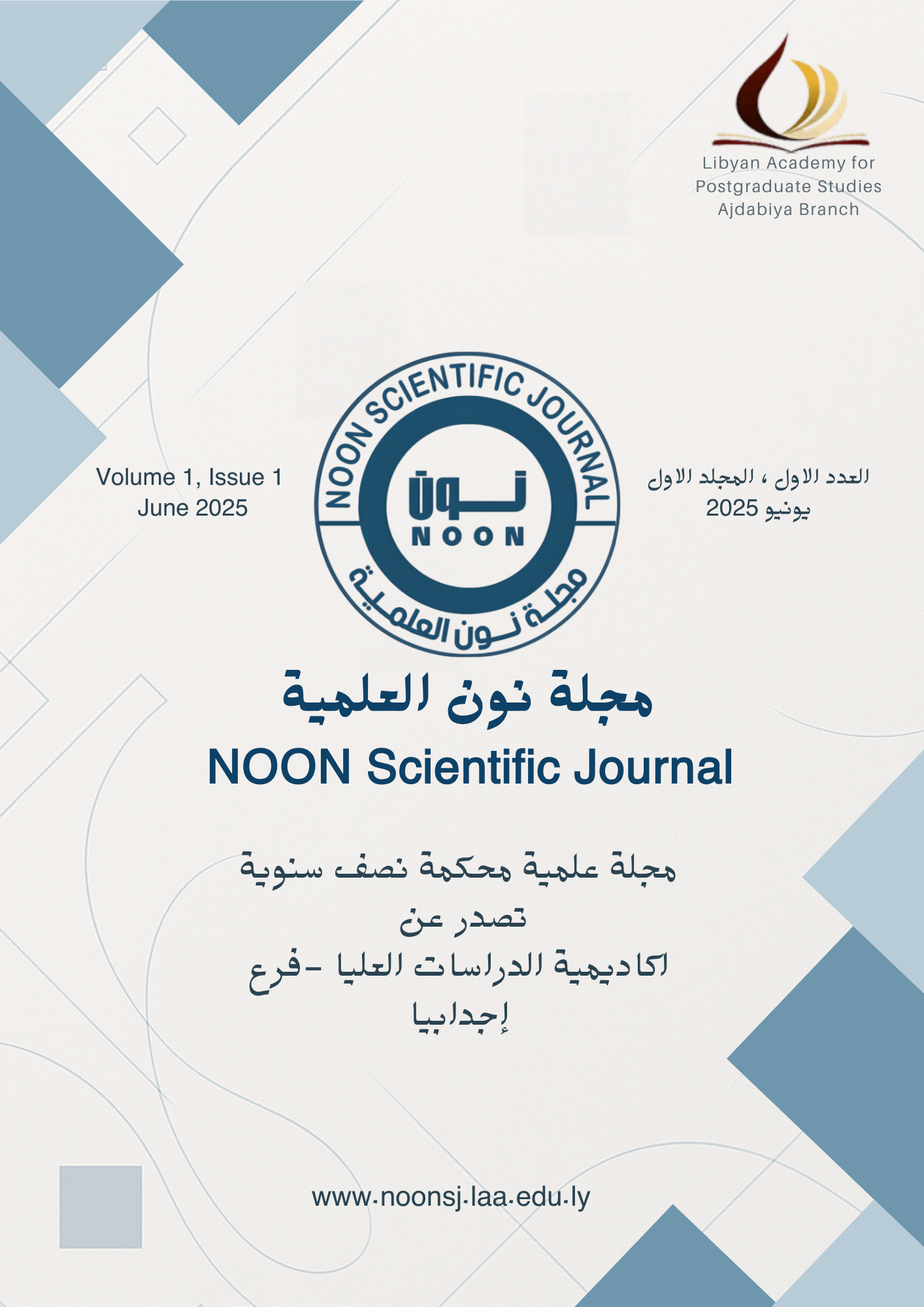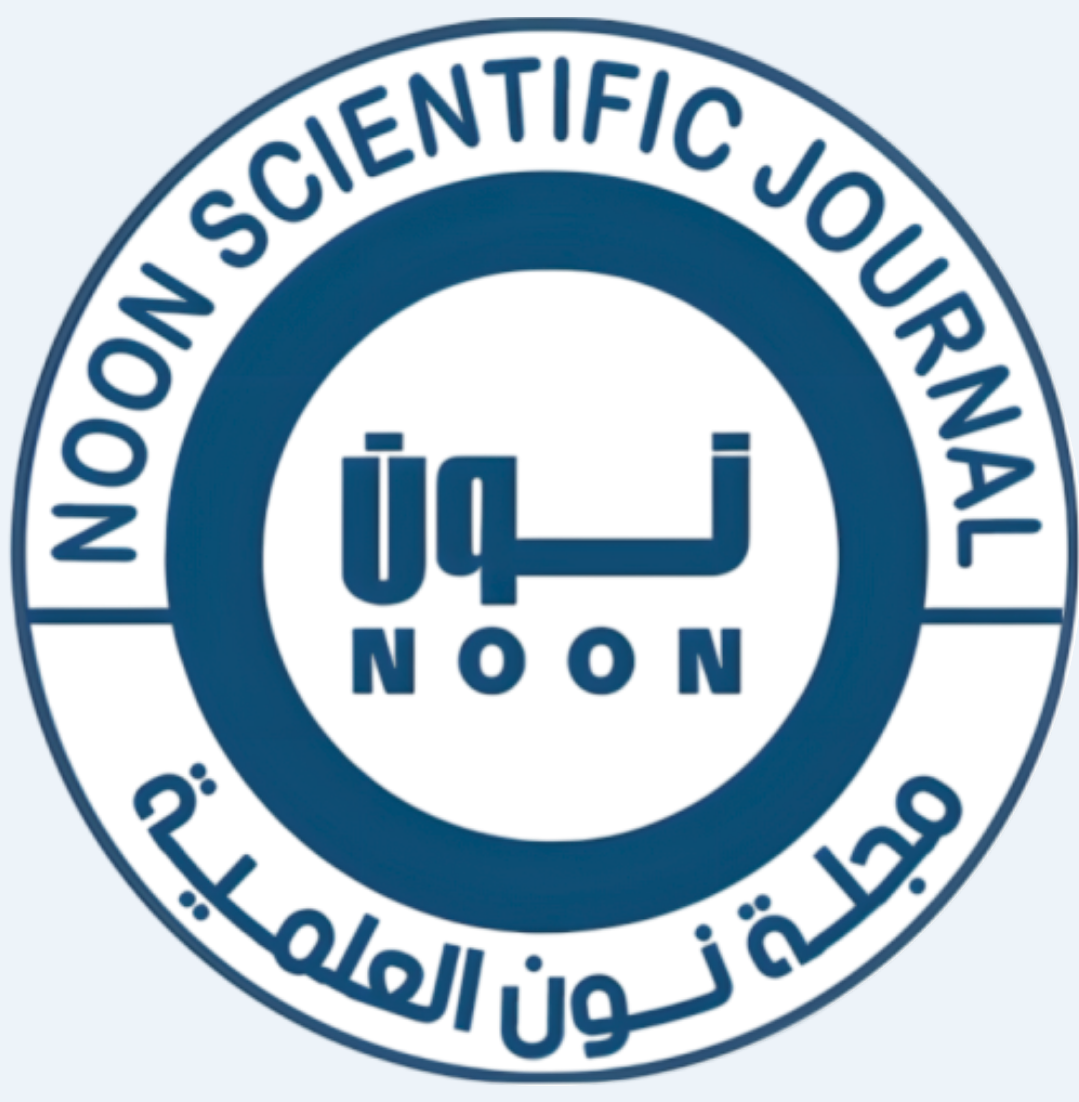Home \ Archives\vol 1, No 1, 2025\Articles
METAPHOR USE IN THE LIBYAN MAINSTREAM MEDIA COVERAGE OF THE COVID-19 PANDEMIC NEWS
- MOHAMED IBRAHIM MOHAMED HARROUS & ALIAKBAR IMANI (AUTHORS)
- Faculty of Education, Universiti Teknologi Malaysia, Johor Bahru, Malaysia
DOI: 10.64587/NSJAPGSmhai
Volume (1), Issue (1) , June 2025

Published: 06/30/2025
Keywords: Metaphor, Media, Mainstream, Coverage, COVID-19
Abstract: During the COVID-19 pandemic, the health-care systems of the transition countries experienced serious problems in the aspect of delivering adequate health care. Hence, during the recent pandemic, institutions and organizations across the world, such as Libya, started using the telehealth technology as it creates another line of communication and direct physician-patient interviews to avoid the spread of COVID-19. The objective of this study is to interpret the metaphors used in three Libyan mainstream media to determine the metaphorical depiction of COVID-19 in Libya’s mainstream media and to determine the newspapers that used more metaphors in the representation of COVID-19. Findings unveiled that war was the most dominant metaphor in the Libyan newspapers that were used in trying to convince the people about their activities in reducing the pandemic; however, the newspapers opted not to use the same metaphor as in the news. This study recommends that figurative language be seen as a tool to better understand concepts; metaphors in modern social media platforms such as Instagram, Facebook, Twitter, etc., also need to be investigated. Future studies may focus on how social media affects communication using metaphors. Finally, metaphors could be investigated as a tool for exchanging knowledge about cultures since they emerge through various cultural and social networks.
References
Abdul-Mageed, M., & Diab, M. (2012). AWATIF: A multi-genre corpus for modern standard Arabic subjectivity and sentiment analysis. In Proceedings of the Eight International Conference on Language Resources and Evaluation (LREC’12), pp. 19–28, Istanbul, Turkey. Alexander, N. (1997). Language policy and planning in the new South Africa. African Sociological Review/Revue Africaine de Sociologie, 82-92. Alzoraiki, M.S.M. (2021). Towards the Sustainable Teaching Quality through School Culture and Teachers’ Commitment using PLS-SEM Approach. Asia Proceedings of Social Sciences, 8(2): 84-87. Ausmus, W.A. (1998). Pragmatic uses of metaphor: models and metaphor in the nuclear winter scenario, Communication Monographs, 65, 67-82. Boroditsky, L. (2000). Metaphoric structuring: Understanding time through spatial metaphors. Cognition, 75(1): 1-28. Bougher, D.L. (2012). The case for metaphor in political reasoning and cognition. Political Psychology, 33(1). doi: 10.1111/j.1467-9221.2011.00865.x. Bowdle, B. F., & Gentner, D. (2005). The career of metaphor. Psychological Review, 112(1): 193. Burke, K. (1941). Four master tropes. The Kenyon Review, 3(4): 421-438. Buzzanell, P.M., & Burrell, N.A. (1997). Family and workplace conflict: Examining metaphorical conflict schemas and expressions across context and sex. Human Communication Research, 24(1), 109 146. Cameron, L., Maslen, R., & Low, G. (2010). Finding systematicity in metaphor use. In Cameron, L. & Maslen, R., Ed., Metaphor analysis. London: Equinox, pp.116-146. Casanovas, P. (2019). Catalan identities: Language, power and political pactism from a historical perspective. In The Rise of Catalan Identity (pp. 19-48): Springer. Crocker, J.C. (1977). The social functions of rhetorical forms. In: Sapir, J.D., Crocker, J.C. (Eds.), the Social Use of Metaphor: Essays on the Anthropology of Rhetoric. University of Pennsylvania Press, Philadelphia, pp.33–66. Danaher, D. (1998). Peirce’s semiotic and conceptual metaphor theory. Semiotica, 119, 171–207. David, Y. (2021). Public opinion, media and activism: the differentiating role of media use and perceptions of public opinion on political behaviour. Social Movement Studies, 1-21. Davies, M. (2021). The Coronavirus Corpus: Design, construction, and use. International Journal of Corpus Linguistics. Deetz, S. (1984). Metaphor analysis. In: Gudykunst, W., Kim, Y. (Eds.), Methods for Intercultural Communication Research. Sage, Beverly Hills, CA, pp. 215–228.El Refaie, E. (2019). Visual metaphor and embodiment in graphic illness narratives: Oxford University Press, USA. Elhadi, M., Msherghi, A., Elhadi, A., Ashini, A., Alsoufi, A., Alshiteewi, F. B. . . . Elkhafeefi, F. (2021). Utilization of Telehealth Services in Libya in Response to the COVID-19 Pandemic: Cross-sectional Analysis. JMIR Medical Informatics, 9(2): e23335. Eubanks, P. (1999). Conceptual metaphor as rhetorical response. Written Communication, 16, 171 200. Feinstein, H. (1982). Meaning and visual metaphor. Studies in Art Education, 23(2): 45-55. Gavriely‐Nuri, D. (2009). Friendly fire: war‐normalizing metaphors in the Israeli political discourse, Journal of Peace Education, 6(2): 153-169, DOI: 10.1080/17400200903090252 Goulden, N.R., & Griffin, C.J.G. (1995). The meaning of grades based on faculty and student metaphors. Communication Education, 44, 110–125. Hettich, P., & Kachi, A. (2022). Swiss Energy Governance: Political, Economic and Legal Challenges and Opportunities in the Energy Transition. In: Springer Nature. Hweio, H. (2020). The Muslim Brotherhood: Libya as the Last Resort for the Continued Existence of the Global Movement. Middle East Law and Governance, 13(1): 5-21. Kecskes, I. (2004). Lexical merging, conceptual blending, and cultural crossing. Intercultural Pragmatics, 1, 1–26. Kim, S., & Kim, S. (2021). Searching for a general model of conspiracy theories and its implication for public health policy: Analysis of the impacts of political, psychological, structural factors on conspiracy beliefs about the COVID-19 pandemic. International Journal of Environmental Research and Public Health, 18(1), 266. Kovecses, Z. (2002). Metaphor: A Practical Introduction. Oxford University Press. Kuusisto, R. (2002). Heroic tale, game, and business deal? Western metaphors in action in Kosovo. Quarterly Journal of Speech, 88, 50–68 Lakoff, G., & Johnson, M. (1980). Conceptual metaphor in everyday language. The journal of Philosophy, 77(8): 453-486. Latif, A., Das, D.C., Barik, A.K., & Ranjan, S. (2019). Maiden coordinated load frequency control strategy for ST‐AWEC‐GEC‐BDDG‐based independent three‐area interconnected microgrid system with the combined effect of diverse energy storage and DC link using BOA‐optimised PFOID controller. IET Renewable Power Generation, 13(14): 2634-2646. Lule, J. (2004). War and its metaphors: news language and the prelude to war in Iraq, 2003. Journalism Studies 5, 179–191. McKimm-Breschkin, J., Trivedi, T., Hampson, A., Hay, A., Klimov, A., Tashiro, M., . . . Zambon, M. (2003). Neuraminidase sequence analysis and susceptibilities of influenza virus clinical isolates to zanamivir and oseltamivir. Antimicrobial Agents and Chemotherapy, 47(7): 2264-2272. McNeil, M., Arribas-Ayllon, M., Haran, J., Mackenzie, A., & Tutton, R. (2016). 15 Conceptualizing Imaginaries of Science, Technology, and Society. The handbook of Science and Technology Studies, 435. Medhurst, M., Ivie, R., Wander, P., & Scott, R. (1998). Cold War Rhetoric: Strategy, Metaphor, and Ideology. Michigan State University Press, East Lansing, MI. Merriam-Webster. (n.d.). Black box. In Merriam-Webster.com dictionary. Retrieved July 24, 2022, from https://www.merriam-webster.com/dictionary/black%20box Nie, J.B., Gilbertson, A., Roubaix D.M., Staunton, C., van Niekerk, A., Joseph, D., Tucker, D.J., & Rennie, S. (2016). Healing Without Waging War: Beyond Military Metaphors in Medicine and HIV Cure Research. The American Journal of Bioethics, 16(10), https://doi.org/10.1080/15265161.2016.1214305. Osborn, M.M., & Ehninger, D. (1962). The metaphor in public address. Speech Monographs 29, 223 234. Pitcher, R., & Akerlind, G.S. (2009). Post-doctoral researchers’ conceptions of research: a metaphor analysis. International Journal for Researcher Development, 1(2). 160-172. Refaat, M. (2021). Crimes against humanity in Libya–The Criminal Role of Saudi Arabia and UAE.on Computer Science Protecting Human Society Against Epidemics (pp. 41-52). Springer, Cham. Sekaran, U., & Bougie, R. (2016). Research methods for business: A skill-building approach: John Wiley & Sons. Singh, A.R., Ohri, P., & Singh, I. (2021). Covering the covid-19: a verbal-visual analysis of leading newspapers of India. Journal of Content, Community and Communication, 13, 137-153. Staton, A.Q., & Peeples, J.A. (2000). Educational reform discourse: President George Bush on ‘‘America 2000’’. Communication Education, 49, 303–319. Thibodeau, P.H., Matlock, T., & Flusberg, S.J. (2019). The role of metaphor in communication and thought. Language and Linguistics Compass, 13(5): e12327. Wood, M.S. (2015). Aristotle and the Question of Metaphor (Doctoral dissertation, Université d’Ottawa/University of Ottawa). Youguo, D. (2013). Study on the essence of metaphor. International Academic Workshop on Social Science. Atlantis Press, 560-562. https://dx.doi.org/10.2991/iaw-sc.2013.124
